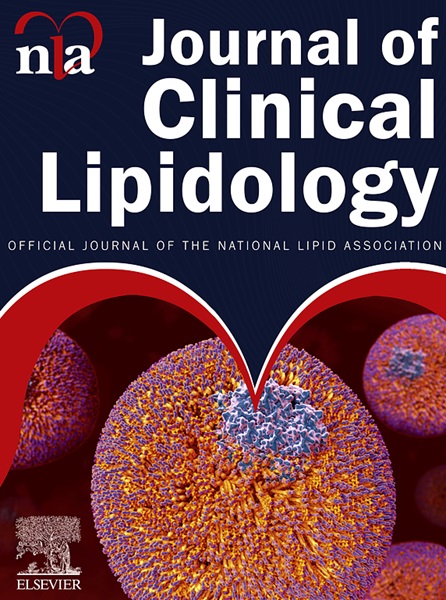在高危动脉粥样硬化性心血管疾病中实现低密度脂蛋白胆固醇阈值。
IF 4.6
3区 医学
Q2 PHARMACOLOGY & PHARMACY
引用次数: 0
摘要
背景:与2018年美国心脏协会/美国心脏病学会/多协会指南相比,2022年美国心脏病学会关于非他汀类药物治疗作用的专家共识决策路径建议更积极地管理低密度脂蛋白胆固醇(LDL-C)。与欧洲指南一致,建议高危动脉粥样硬化性心血管疾病(ASCVD)患者的目标LDL-C阈值为55 mg/dL。这一建议早期实施的实际情况仍不确定。目的:确定高危ASCVD患者达到LDL-C的比例方法:本回顾性队列研究评估了2023年1月1日至2023年12月31日期间来自科罗拉多大学卫生系统初级保健实践的≥18岁高危ASCVD患者。高危ASCVD定义为有重大ASCVD事件史,同时伴有至少2种高危情况。结果:共有8974例患者符合高危ASCVD的纳入标准。其中,只有21.0%达到了LDL-C。结论:在一个大型的学术卫生系统中,非常高风险ASCVD患者的LDL-C阈值达到较低。2022 ACC专家共识决策路径的建议支持更积极地降低LDL-C,并强调非他汀类药物治疗作为他汀类药物的辅助,但在现实世界的临床实践中并未完全实施。本文章由计算机程序翻译,如有差异,请以英文原文为准。
Achievement of low-density lipoprotein cholesterol thresholds in very high-risk atherosclerotic cardiovascular disease
BACKGROUND
The 2022 American College of Cardiology Expert Consensus Decision Pathway on the Role of Nonstatin Therapies recommended more aggressive management of low-density lipoprotein cholesterol (LDL-C) compared to the 2018 American Heart Association/American College of Cardiology/Multisociety Guideline. In congruence with European guidelines, a target LDL-C threshold of 55 mg/dL is recommended for patients with very high-risk atherosclerotic cardiovascular disease (ASCVD). Real-world status of the early implementation of this recommendation remains uncertain.
OBJECTIVE
To determine the proportion of patients with very high-risk ASCVD achieving an LDL-C <55 mg/dL and characterize differences between patients who did and did not achieve this LDL-C value.
METHODS
This retrospective cohort study evaluated patients between January 1, 2023, and December 31, 2023, who were ≥ 18 years old with very high-risk ASCVD from the University of Colorado Health system primary care practices. Very high-risk ASCVD was defined as a history of a major ASCVD event with at least 2 high-risk conditions.
RESULTS
A total of 8974 patients met inclusion criteria for very high-risk ASCVD. Of these, only 21.0% achieved an LDL-C <55 mg/dL, while 39.5% of patients achieved the previously recommended LDL-C threshold of <70 mg/dL. More than half of patients were prescribed a high-intensity statin-based regimen.
CONCLUSION
Within a large, academic health-system, achievement of LDL-C threshold among patients with very high-risk ASCVD was low. Recommendations from the 2022 ACC Expert Consensus Decision Pathway that endorse more aggressive LDL-C lowering and emphasize nonstatin therapies as an adjunct to statins are not fully implemented in real-world clinical practice.
求助全文
通过发布文献求助,成功后即可免费获取论文全文。
去求助
来源期刊
CiteScore
7.00
自引率
6.80%
发文量
209
审稿时长
49 days
期刊介绍:
Because the scope of clinical lipidology is broad, the topics addressed by the Journal are equally diverse. Typical articles explore lipidology as it is practiced in the treatment setting, recent developments in pharmacological research, reports of treatment and trials, case studies, the impact of lifestyle modification, and similar academic material of interest to the practitioner.
Sections of Journal of clinical lipidology will address pioneering studies and the clinicians who conduct them, case studies, ethical standards and conduct, professional guidance such as ATP and NCEP, editorial commentary, letters from readers, National Lipid Association (NLA) news and upcoming event information, as well as abstracts from the NLA annual scientific sessions and the scientific forums held by its chapters, when appropriate.

 求助内容:
求助内容: 应助结果提醒方式:
应助结果提醒方式:


